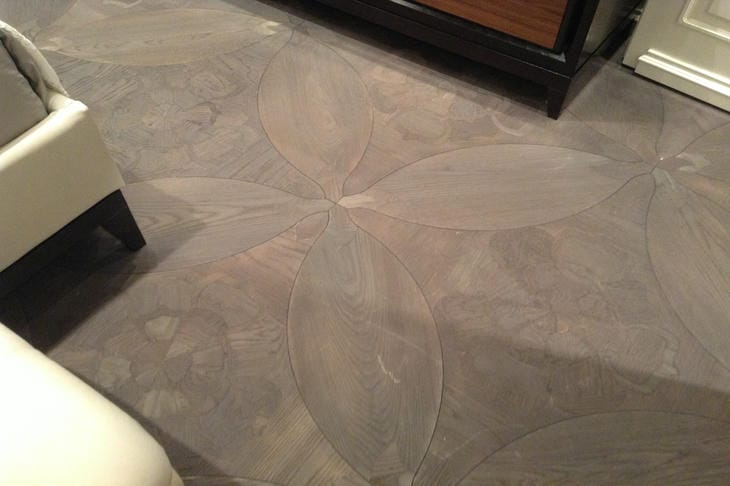What you shouldn't wash linoleum with: protecting the floor from destructive cleaning
Linoleum is a popular flooring material known for its practicality and durability.
However, even this durable material can quickly become unusable if not properly cared for.
Choosing the right linoleum cleaning products is the key to keeping your linoleum looking great for years to come.
Abrasives
Using abrasive cleaning agents is one of the most common mistakes when caring for linoleum.
Powders, pastes and creams with abrasive particles can scratch the surface of the coating, damaging its protective layer.

This not only spoils the appearance of the linoleum, but also makes it more susceptible to dirt and damage in the future. Even small scratches accumulate over time, making the surface dull and uneven.
Alkaline detergents
Alkaline solutions, such as dishwashing detergents or washing powder, can be destructive to linoleum. They damage the structure of the material, causing it to delaminate and lose elasticity.
Regular use of such products leads to premature wear of the coating, the appearance of cracks and peeling off from the base.
Particularly dangerous are concentrated alkaline solutions, which can cause irreversible damage after the first use.
Acid cleaners
Acid-containing products are also not suitable for linoleum care. Vinegar, citric acid and specialized acid cleaners can corrode the surface of the coating, leaving stains and changing the color.
In addition, acids can destroy the adhesive layer that attaches linoleum to the floor, which leads to its peeling and deformation.
Solvents and aggressive chemicals
Acetone, gasoline, paint thinners and other aggressive chemicals are strictly prohibited for use in cleaning linoleum.
They are capable of dissolving the top protective layer of the coating, leaving it defenseless against dirt and mechanical damage.
In addition, such substances can cause discoloration or change the shade of linoleum, especially if it has a bright or saturated color.
Hot water and steam
Although hot water and steam are effective for disinfection, their use can cause serious damage to linoleum.
High temperatures can cause deformation of the material, especially at joints and edges.
This can lead to the formation of bubbles, peeling of the coating from the base and damage to its integrity.
In addition, hot water can accelerate the penetration of moisture under the linoleum, which creates favorable conditions for the development of mold and mildew.
Hard brushes and sponges
It is unacceptable to use hard brushes, metal sponges or rough sponges to clean linoleum. They leave many small scratches on the surface, which not only spoil the appearance of the coating, but also become a place for dirt accumulation.
Over time, these scratches deepen, which leads to premature wear of the linoleum and the need to replace it.
Wax based products
While wax polishes may give linoleum a temporary shine, using them in the long run does more harm than good.
Wax accumulates on the surface, forming a sticky film that attracts dust and dirt. In addition, such a coating makes the floor slippery, which can be dangerous.
Removing the wax film requires the use of aggressive agents, which, in turn, can damage the linoleum.
